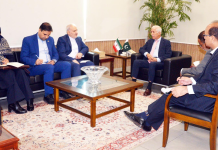ISLAMABAD, Oct 30 (DNA):This year,2025 the United Nations marks its 80th anniversary, a symbolic milestone for the entire international system undergoing profound transformation. Amid escalating conflicts, global inequality, and widening technological divides, the UN platform is once again emerging as a space where states seek compromise and shape new rules of global engagement.
For Uzbekistan, the anniversary session of the General Assembly was not merely a diplomatic event, but an opportunity to reaffirm its new international standing that of an active participant and initiator of regional and global processes, said in research article , written by Azamat Toshev, head of department,International Institute for Central Asia, released by Embassy of Uzbekistan in Islamabad.
Since joining the United Nations in 1992, Uzbekistan has evolved from a young independent state into a recognized partner advancing initiatives that serve the interests of the entire region. Today, 25 UN offices and agencies operate in the country, implementing more than 160 projects worth over $175 million. These programs cover key areas: education, healthcare, gender equality, poverty reduction, sustainable development and digital transformation. All of this reflects the gradual strengthening of Uzbekistan’s institutional presence within the UN system and its commitment to aligning national reforms with international obligations.
The year 2016 marked a turning point in Uzbekistan’s foreign policy, the beginning of a new course based on the principles of openness, dialogue, and good-neighborliness. It was from that moment that Tashkent began shaping its own regional agenda. In his addresses to the UN General Assembly, President Shavkat Mirziyoyev outlined a strategic objective, to transform Central Asia into a zone of sustainable development, mutual trust, and partnership.
The first step in this direction was the 2017 Samarkand Conference held under the auspices of the United Nations, which laid the foundation for the concept of the “Samarkand Spirit”. This format, based on the principles of equality, mutual benefit, and open discussion of regional issues, became a prototype for a new model of regional cooperation. The Conference Communiqué served as the basis for the UN General Assembly resolution “Strengthening Regional and International Cooperation for Peace, Stability and Sustainable Development in Central Asia”. For the first time, the region was presented on the global stage as a single geopolitical space united by common interests and shared responsibility for its future.
Since then, Uzbekistan has put forward a number of key international initiatives, enshrined in 13 resolutions of the UN General Assembly, most of which directly concern Central Asia: sustainable tourism, environmental innovations in the Aral Sea region, connectivity between Central and South Asia, countering drug trafficking, and sustainable development. This systemic approach reflects a new vision — a transition from participation to creation, from national policy to a regional strategy.
A new stage of diplomatic activity was also reflected in the 80th anniversary session of the UN General Assembly.
The address of the President of the Republic of Uzbekistan received wide international resonance, as it presented a comprehensive strategic agenda focused on Central Asia.
Special attention in the President’s address was given to strengthening transport connectivity.
This approach allows transport to be viewed not merely as an economic factor, but as an instrument of integration and regional stabilization. In parallel, Uzbekistan advanced initiatives to establish a regional office of the UN Counter-Terrorism Office, to launch a World Youth Movement for Peace, and to hold a World Summit on Vocational Education. All these proposals are united by a single idea — the creation of a sustainable architecture of peace founded on education, humanism, and social engagement.
In parallel with his address to the General Assembly, President Shavkat Mirziyoyev held a meeting with United Nations Secretary-General António Guterres. The parties noted the unprecedentedly high level of partnership. Tashkent’s growing regional engagement has coincided with a shifting geopolitical balance around Central Asia.
President Shavkat Mirziyoyev has clearly stated that global stability is impossible without a sustainable Central Asia. Therefore, Uzbekistan places its focus not on declarations but on concrete mechanisms — climate, water, transport, and humanitarian initiatives backed by tangible action. The establishment of the UN Multi-Partner Human Security Trust Fund for the Aral Sea Region, the development of “green” zones, programs to combat childhood oncology, and digital initiatives — all reflect the country’s transition from national reforms to international responsibility.
At the same time, Tashkent has been consistently promoting the principles of equality and inclusivity in international relations, advocating for an expanded composition of the UN Security Council so that developing countries can gain fairer representation in global decision-making processes. This demonstrates that Uzbekistan does not confine itself to regional issues, but seeks to take part in the broader global reform of the international system.
It is emerging as a new center of regional resilience, where Uzbekistan plays the role of a key coordinator linking local initiatives with global objectives. Uzbekistan is not merely adapting to global dynamics — it is making its own contribution to shaping the future of the international system founded on cooperation, trust, and responsibility.
President Shavkat Mirziyoyev’s address in New York became a symbol of the transition from a policy of observation to a policy of creation.
At a time when the global system is searching for new foundations, Central Asia is emerging as an example of how a region long considered peripheral can offer its own concept of resilience and mutual trust to the world. In this process, it is Uzbekistan that sets the tone — shaping a new culture of international cooperation and defining the parameters of regional transformation for years to come.
















